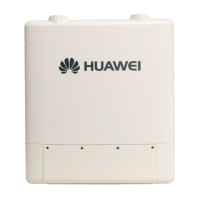LTE TDD B2268H
User Guide
Copyright © Huawei Technologies Co., Ltd.
Table 5-3 Wireless > General: Basic (Static WEP/Shared WEP)
Choose Static WEP or Shared WEP from the drop-down list box.
Select Static WEP to have the LTE Device allow association with
wireless clients that use Open System mode. Data transfer is encrypted
as long as the wireless client has the correct WEP key for encryption.
The LTE Device authenticates wireless clients using Shared Key mode
that have the correct WEP key
Select Shared WEP to have the LTE Device authenticate only those
wireless clients that use Shared Key mode and have the correct WEP
key.
Enter a WEP key that will be used to encrypt data. Both the LTE Device and
the wireless stations must use the same WEP key for data transmission.
5.2.2 More Secure (WPA(2)-PSK)
The WPA-PSK security mode provides both improved data encryption and user authentication
over WEP. Using a Pre-Shared Key (PSK), both the LTE Device and the connecting client share
a common password in order to validate the connection. This type of encryption, while robust,
is not as strong as WPA, WPA2 or even WPA2-PSK. The WPA2-PSK security mode is a newer,
more robust version of the WPA encryption standard. It offers slightly better security, although
the use of PSK makes it less robust than it could be.
Click Network Settings > Wireless to display the General screen. Select More Secure as the
security level. Then select WPA-PSK or WPA2-PSK from the Security Mode list.
Figure 5-5 Wireless > General: More Secure: WPA(2)-PSK
The following table describes the labels in this screen.

